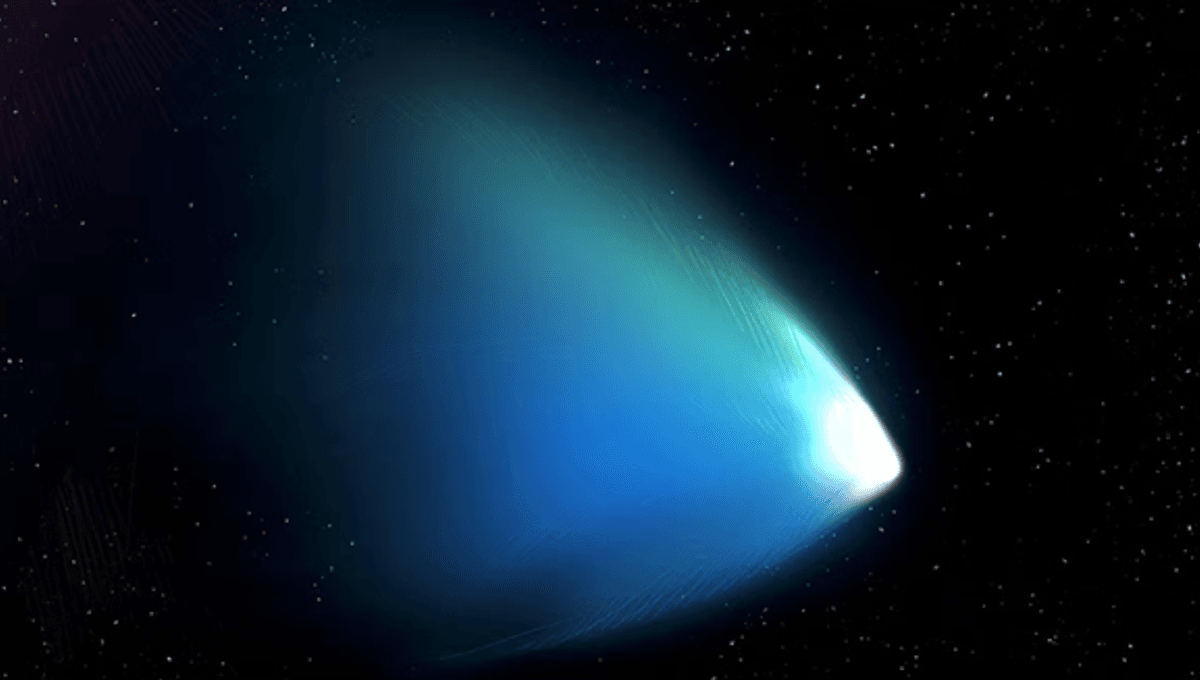
The JWST has examined Chiron, a minor planet that orbits between Jupiter and Neptune, and found unexpectedly different ices from the other objects located in that region of the Solar System. The composition is not yet understood, but once explained, it may reveal something important about the origins of the Solar System beyond the “snow line” where ices dominate.
Chiron, not to be confused with Pluto’s moon Charon, was discovered in 1977 and named after the “wisest and justest” of the centaurs of Greek mythology. It was the first object of its size found to never get closer than the orbit of Jupiter, and led to the group located in the same region being collectively named after the half-horses, half-men.
However, while Chiron is definitely a centaur, other classification is more difficult. It’s not big enough to be considered a dwarf planet like Pluto or Ceres. Initially considered to be an asteroid, it brightened significantly in 1988 as it approached the inner part of its orbit, hinting at a cometary coma, which was subsequently confirmed.
Curiously, Chiron doesn’t just release bursts of gas when it is closest to the Sun. However, the quantities of gas that escape it are so small that it’s considered an example of how the line between asteroids and comets is not always sharp.
Previous studies of Chiron suggested its surface was mainly made up of water ice mixed with dust. Other centaurs have surfaces of methanol as well as water and carbon dioxide ice, but the spectra the JWST observed indicate the presence of carbon dioxide and carbon monoxide ice. The same ices were discovered on trans-Neptunian objects (TNOs) earlier this year, along with light hydrocarbons on the larger TNOs.
Most of these observations are tentative, however. Many molecules’ spectra peak at similar points, making them hard to distinguish at distances like this, even with an instrument like the JWST.
Meanwhile, Chiron’s coma is composed mostly of methane with some carbon dioxide. These are thought to be primordial ingredients, but more complex molecules like acetylene (C2H2), propane (C3H8), and ethane (C2H6) detected on the surface may have formed there as sunlight sparked chemical reactions. None of these have previously been detected on centaurs, although comets and TNOs have some.
“What is unique about Chiron is that we can observe both the surface, where most of the ices can be found, and the coma, where we see gases that are originating from the surface or just below it,” said study author Dr Noemi Pinilla-Alonso in a statement.
“TNOs don’t have this kind of activity because they’re too far and too cold. Asteroids don’t have this kind of activity because they don’t have ice on them. Comets, on the other hand, show activity like centaurs, but they are typically observed closer to the Sun, and their comas are so thick that they complicate the interpretations of observations of the ices on the surface.”
Useful as this makes Chiron, it’s not great as a representative of a class of objects. “It’s an oddball when compared to the majority of other Centaurs,” said fellow study author Dr Charles Schambeau.
However, for centaurs, being quirky may actually be the norm. “Every active centaur that we are observing with JWST shows some peculiarity. But they cannot be all outliers. There must be something that explains why they appear to all behave differently or something that is common between them all that we cannot yet see,” Pinilla-Alonso said.
Centaurs’ orbits are usually unstable over the long term, a product of passing too close to one or more giant planets whose gravity will eventually disrupt them. Consequently, it can’t be assumed they all formed in the same place.
However, it is thought that Chiron was once a TNO itself before a close encounter sent it inwards. It’s expected to last about a million years as a centaur, before either becoming a Jupiter-Family Comet or being sent to the outer wastes again. At 210 kilometers (130 miles) wide, it’s even larger than the so-called “megacomet”, so an orbit that brings it closer to us (but not too close) would be a treat.
Chiron’s orbit brings it a little closer to the Sun than Saturn at its closest, and takes it out beyond the orbit of Uranus at its furthest, creating a substantial temperature range. The JWST studied it while it was close to its furthest point from the Sun.
Yet the observations don’t match expectations for something with that orbit. Carbon monoxide boils at temperatures far lower than the point at which carbon dioxide turns to gas, making its presence on Chiron’s surface, but not in the surrounding gasses, a puzzle.
“It may be necessary to explore intricate scenarios in which the absorption and emissions of different materials originate in distinct reservoirs on Chiron, each possessing unique physical or chemical properties,” the authors write.
Chiron has already established its odd nature. Once thought to have a ring, it instead seems to be accompanied by a rapidly evolving disk like nothing we have seen before.
One of the many benefits of the JWST’s anticipated extended life is that it will get to observe Chiron again when it is considerably closer to the Sun, and more of its ice is turning to gas.
The study is published in Astronomy and Astrophysics.
Source Link: The Minor Planet Chiron Is Strange – And So Is Its Ice